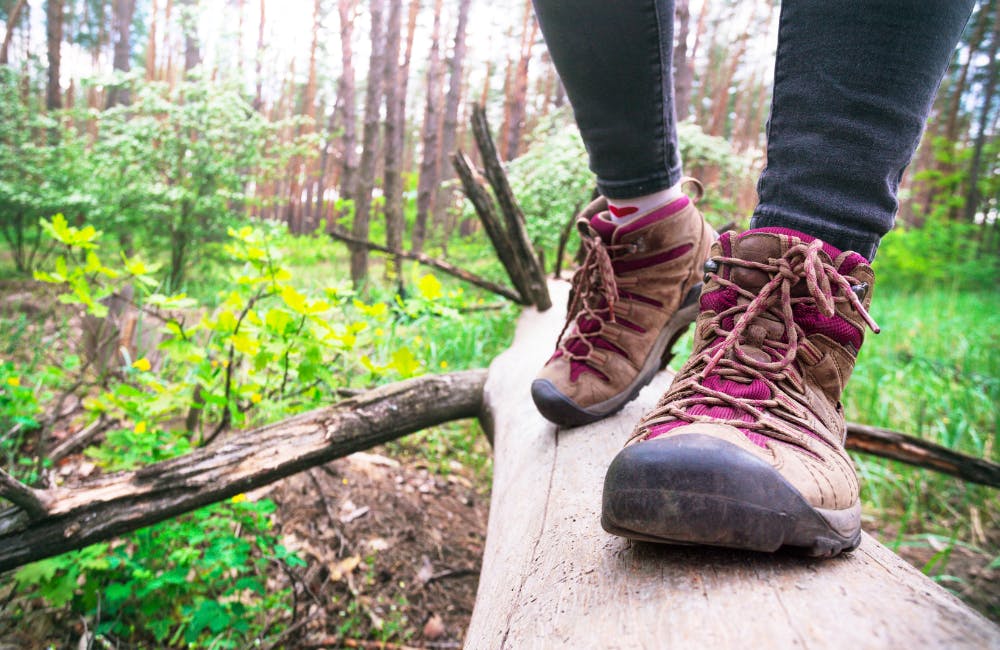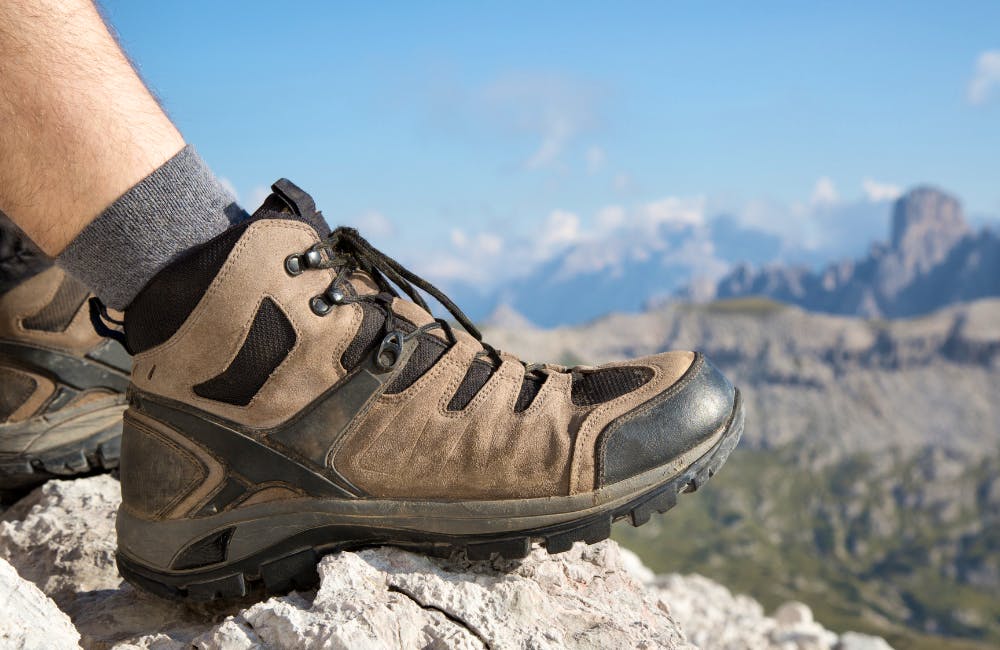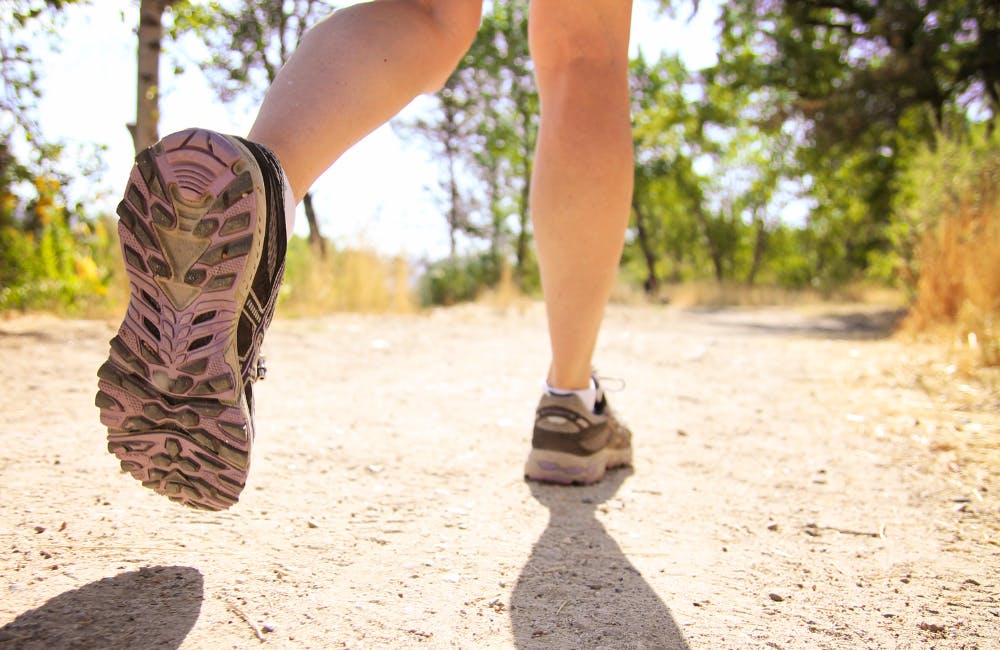I’ve had my fair share of debates over footwear on the trails. Some hikers swear by sturdy shoes, while others prefer the lightweight feel of trail runners.
After countless miles, completing the
Tour du Mont Blanc, dealing with blisters, and chatting with fellow adventurers, I’ve learned that the right choice depends entirely on where
(and how) you hike.
At
Skyhook, we’ve already covered the differences between
hiking shoes vs. boots, but what if you’re debating between
trail running shoes and hiking shoes?
That’s where I come in. Let me break it down so you can hit the trail with confidence.
Trail Running Shoes vs Hiking Shoes: Explained
Let’s start with the basics. First up in this debate is getting to understand trail running shoes.
What Are Trail Running Shoes?
Unlike traditional hiking shoes, trail running shoes are designed for speed and agility. This makes them a favourite among those who like to move quickly over rough terrain. Hence the name.
But, there’s a bit more to it. Here’s what makes them stand out:
Lightweight and Flexible: Made with breathable materials to keep your feet cool and reduce fatigue on long runs.
Enhanced Traction: Grippy, aggressive tread patterns help tackle loose dirt, gravel, and even wet rock.
Cushioning: Extra padding absorbs impact, making them ideal for high-intensity movement.
I reach for trail running shoes when I’m covering ground fast. Whether it’s a quick day hike or a trail run through well-maintained paths. They’re perfect for:
Trail runners who need performance, speed, and flexibility.
Hikers who prefer a lighter, more agile shoe for short and moderate hikes.
Trail runners give you freedom of movement, but are they the right fit for every adventure?
Spoiler alert: They’re not. More on that later.
Let’s take a look at hiking shoes next.
Hiking shoes are the sweet spot between the agility of trail runners and the sturdiness of boots. They offer a balance of support and mobility without unnecessary bulk.
Here’s why hikers like me love them:
Sturdy Construction: Built with tough materials to handle rough terrain and unpredictable weather.
Supportive Design: Offers moderate ankle support and stability, especially on uneven ground.
Protective Elements: Reinforced toe caps and thick soles shield your feet from rocks, roots, and debris.
I turn to hiking shoes when I need something reliable for day hikes or light backpacking trips. They’re ideal for:
Hiking shoes offer a balance of support and mobility, making them a solid choice for most trails.
My Pro Tip: If you’re gearing up for your next adventure, don’t forget to check out our guide on
what to bring hiking for a smooth and stress-free trip.
So, how do hiking shoes stack up against trail runners? Let’s compare the two.
Key Differences Between Trail Running Shoes and Hiking Shoes
Choosing the right footwear depends on the type of adventure you’re planning.
Both trail running shoes and hiking shoes have their strengths, but understanding their differences will help you decide which is best for your needs.

Latest Deals
Discover trips on sale on Skyhook. Book once-in-a-lifetime adventures at discounted prices.
Trail running shoes are noticeably lighter than hiking shoes. This makes them ideal for covering ground quickly and reducing fatigue, especially over long distances.
The trade-off? Lighter materials mean they may not last as long when exposed to rough terrain.
Hiking shoes are designed for stability and ankle support, making them the better choice for uneven or rocky trails.
Trail running shoes, on the other hand, prioritise flexibility over structured support.
If you’re carrying a backpack or navigating technical terrain, hiking shoes will provide the extra reinforcement your feet need.
Hiking shoes are built to last, with tough materials that can withstand repeated exposure to rocks, mud, and harsh environments.
Trail running shoes, while rugged, are designed for speed rather than longevity, and the lightweight materials tend to wear out faster, especially on abrasive surfaces.
Trail running shoes are made to move with you, offering a more natural stride for running or fast-paced hiking.
Hiking shoes, by comparison, have stiffer soles that provide better protection against rough terrain but limit flexibility. If agility is your priority, trail runners will feel more responsive.
Hiking shoes offer better protection against sharp rocks, roots, and debris, thanks to their reinforced toe caps and thicker soles.
Trail running shoes provide some protection but focus more on breathability and comfort. If you’re venturing onto rough terrain, hiking shoes will keep your feet safer.
So, which one is right for you? Let me explain how to choose the right shoe for your next adventure.
Choosing the Right Footwear for Your Adventure
Here’s the good (or the bad news): There’s no one-size-fits-all when it comes to trail footwear.
The best choice depends on where you’re heading, how long you’ll be out, and what kind of experience you want.
But, I can help you decide which is best. Here’s how to decide based on a few simple factors:
If you’re sticking to well-groomed trails with packed dirt or soft surfaces, trail running shoes will keep you light on your feet and moving fast.
If your route involves rocky paths, steep inclines, or technical terrain, hiking shoes will provide the grip, protection, and stability you need to stay comfortable and safe.
For short, fast hikes or a mix of running and hiking, trail running shoes are an excellent choice.
If you’re going on longer treks, especially with a heavy pack, hiking shoes will offer better support and reduce foot fatigue over time.
If you’re mostly running trails with the occasional hike, trail running shoes are the best fit.
If you prefer steady, all-day hiking, hiking shoes will provide better durability and protection.
If you’re mixing both, consider hybrid options with reinforced soles and extra traction.
My Pro Tip: Your choice of footwear is just one part of your hiking setup. To stay comfortable and prepared, make sure you also know
what to wear hiking, from moisture-wicking layers to the right socks.
And there you have it: trail running shoes vs hiking shoes explained. The right choice comes down to your adventure. Remember: speed and flexibility for trail running shoes, or durability and support for hiking shoes.
Assess your terrain, activity type, and comfort needs to pick the best fit.
If you're just getting into hiking and aren’t sure where to begin, check out our guide on
how to start hiking for tips on trails, gear, and building confidence outdoors. Now, lace up and hit the trail.























